Mă gândeam zilele trecute că am în jurul meu mulţi oameni deosebiţi, care fac lucruri frumoase şi despre care merită să aflaţi şi voi mai multe, aşa că m-am decis să fac o serie de interviuri cu aceşti oameni deosebiţi.
I was thinking these past few days that I am surrounded by amazing people, who do very nice things and I thought I should introduce them to you. Therefore I decided to interview these people so that you can get to know them and their work better.
Încep astăzi cu
Zsolt Kiss. Pe Zsolt l-am cunoscut la cursul de fotografie pe care l-am parcurs în primăvara lui 2011. Pe atunci făcea fotografie de nuntă şi trebuie să recunosc că are nişte fotografii de nuntă superbe. De ceva vreme însă, a trecut la fotografia de peisaj, iar eu cred că i se potriveşte foarte bine. Dar îl las pe el să vă povestească mai multe despre pasiunea sa pentru fotografie şi despre călătoria în Islanda pe care a întreprins-o recent.
I’ll start my series of interviews of the wonderful people who surround me with Zsolt Kisss. I met Zsolt when taking a photography class in 2011. Back then he was a wedding photographer and I have to admit that he has some amazing wedding shots.
For some time now, he has crossed over to landscape photography and I think it is a good fit for him. I’ll let him tell you more about his passion about photography and about the trip to Iceland he took earlier this year.
Happy reading!
Cum ai început să fotografiezi?
Acum aproximativ 30 de ani, tatăl meu se ocupa cu fotografia de evenimente. În perioada aceea am văzut pentru prima dată ce înseamnă fotografie, de la developare, soluţii, hârtie, lumina roşie. A fost fascinant să văd cum apare imaginea pe hârtia scufundată în revelator. Au trecut anii iar eu mă jucam din când în când cu un Smena 8, apoi în ’97 mi-am cumpărat prima “săpunieră” automată pe film cu care m-am jucat în continuare. A urmat un Fuji bridge cu care am exersat setările manuale postând pozele pe 1-2 pagini de profil unde datorită greşelilor făcute luam foarte multe feedback-uri negative, dar constructive. Pe vremea aceea nu ţineam cont de anumite reguli în fotografie. Încet-încet, învăţând, am ajuns în 2009 să-mi cumpăr primul DSLR care îmi oferea şi mai multă flexibilitate şi cu ajutorul căruia am învăţat şi mai mult. Şi uite am ajuns aici unde sunt la momentul de faţă, conştient că mai am de învăţat şi experimentat foarte mult.
When did you first start photography?
Some 30 years ago my father used to also practice event photography. It was then that I saw what photography really was about – developing, solutions, paper, the red light. It was fascinating for me to see how the picture appears on the paper sunk in the developing solution.
Years have gone by and I used to play every now and then with a Smena 8. Afterwards in ’97 I bought the first automatic film camera J with which I played. It was followed by a bridge Fuji camera on which I practiced manual settings posting on 1-2 profile pages where because of the errors I made, I also got a lot of negative but constructive feedback. I did not take into account the rules of photography back then. After slowly starting to learn more about photography, I bought my first DSLR in 2009 which offered more flexibility and offered me more chances to learn even more.
Când te-ai hotărât să faci fotografie de peisaj?
Am fost atras, şi sunt în continuare atras de natură şi de tot ce ţine de ea. Doar în 2011 am început primele ieşiri mai timide şi primele încercări în fotografia de peisaj. Din 2012 însă am început turele de munte mai serioase şi intense şi m-am “intoxicat” de tot cu natura şi cu muntele. Am devenit pur şi simplu dependent de turele la munte, care nu sunt tocmai uşoare, dar care iţi oferă o satisfacţie maximă. Din 2008 până în 2012 am încercat mai toate genurile în fotografie, dar spre fericirea mea, mi-am găsit calea, satisfacţia şi împlinirea în fotografia de peisaj.
When did you decide to become a landscape photographer?
I have always been attracted by nature and everything about it. Only in 2011 did I start the first shy outings and it is then that I first started with landscape photography. I have started with more serious and intense mountain tours and I got totally “intoxicated” by nature and by the mountains. I became addicted to mountain tours, which are not always easy, but which offer me maximum satisfaction. I have tried almost all photographic genres from 2008 until 2012, but I have found my way, my satisfaction and my fulfillment with landscape photography.
Te-ai întors recent din Islanda, ce impresie ţi-a lăsat această ţară?
De fiecare dată când aud cuvântul “Islanda” sau doar mă gândesc la această ţară am o stare pe care nu o pot înţelege. Printr-un singur cuvânt pot să-ţi descriu Islanda: “FANTASTICĂ”. Însă as fi prea scurt aşa că o descriu în continuare. Este o altă lume, altă planetă, aer curat, curăţenie, civilizaţie, condiţii foarte bune de trai, etc.
You recently got back from Iceland. What was your impression of this country?
Every time I hear the word “Iceland” or I just think of this country I have an incomprehensible state. If I had to describe Iceland in one word, it would be: “FANTASTIC”. But that would be too short, so I’ll try to describe it as follows. It is a whole new world, another planet, fresh air, clean, civilized, very good living conditions, etc.
Care este lucrul care te-a fermecat la această ţară?
În Islanda varietatea peisajelor şi a terenului este fantastică. Peisajul se schimbă la fiecare 10-20 km oferind uimire la fiecare pas. Dacă mergi pentru fotografie şi eşti la volan, îţi vine să te opreşti la fiecare 500 m pentru că ai văzut ceva interesant. Este destul de dificil pentru că astfel nu ajungi niciodată la destinaţie. Cel mai mult mi-a plăcut varietatea peisajelor cu miile de cascade, pârâuri şi munţi şi faptul că nu cresc buruieni. În loc de buruieni găseşti lanuri foarte frumoase şi mari de lupini, iar acolo unde este posibil creşte un gazon natural de un verde nemaiîntâlnit. Cred că nici pe arena naţională nu găseşti aşa un gazon! 🙂 Oceanul Atlantic, pe care l-am găsit extrem de mânios mi-a impus respect. Îl priveam câteodată minute în şir, în timp ce trăgeam în piept aerul foarte sărat. Nu am doar un singur lucru care mi-a plăcut cel mai mult, cred că nici nu este posibil aşa ceva.
What is the thing you liked most about this country?
The variety of landscapes in Iceland is fantastic. The scenery changes every 10-20 km offering astonishment at every step you take. If you are there to take photographs and you are driving, you feel like pulling over every 500 m because you saw something interesting. It then can get tricky to reach your final destination. What I liked the most is the variety of the landscapes with thousands waterfalls, creeks and mountains and the fact that there is no weed (n.a. no, he does not mean the one you can smoke 🙂 ). Instead of that there are great fields of lupins and where the land allows it, a wonderful green grass is growing. I think that the Romanian national arena does not have grass that beautiful and green. 🙂 I also met the Atlantic Ocean, which was extremely angry, having waves up to 2-3 m high, which I stared at for minutes while breathing in the salty air. So I don’t have a favorite thing about this country, I think it is impossible to pick just one.

Care este fotografia ta preferată realizată acolo?
Toate imi sunt dragi. Nu am o fotografie preferată pentru că toate, una câte una reprezintă un moment, o stare de care-mi aduc aminte cu plăcere.
Which is your favorite photograph you took in Iceland?
All are close to my heart. I don’t have a favorite photograph because each and every one of them represents a moment, a state I remember dearly.
Călătoreşti ca să fotografiezi sau fotografiezi ca să călătoreşti?
Amândouă în acelaşi timp. Nu le pot separa şi nu pot să dau prioritate niciuneia dintre ele. Pentru mine a merge undeva înseamnă 50% călătorie şi să mă simt bine şi în largul meu alături de prietena sau prietenii mei, iar pe de altă parte înseamnă fotografie. Oriunde ma duc în natură (munte, mare) încerc să mă depărtez de civilizaţie, căutând locuri mai izolate cu potenţial fotografic.
Do you travel to photograph or do you photograph to travel?
Both at the same time. I cannot draw a line between the two and I cannot prioritize any of the two. For me going somewhere means 50% travelling and having fun with my girlfriend or friends, but on the other side it means photography. Wherever I go out in the nature (in the mountains or at the seaside) I try to get away from the civilization, looking for remote locations with photographic potential.
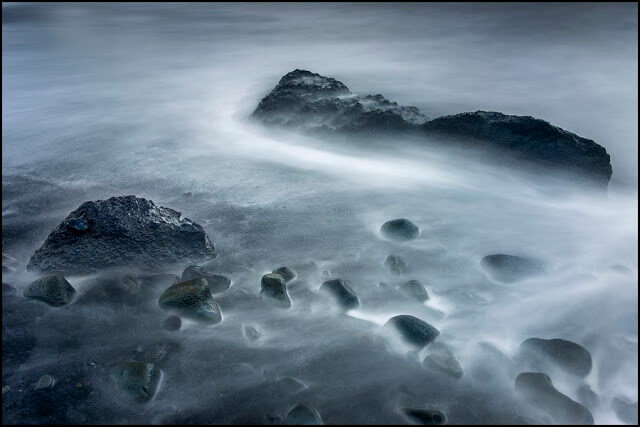
Ce te inspiră?
Simt că inspiraţia vine din natură şi din muzică. Muzica joacă un rol important în lucrările şi în viaţa mea. Asta nu înseamnă că ascult la căşti muzică în timp ce sunt pe teren :)) Nu pot să-mi explic, dar simt o conexiune apropiată cu muzica. Ascult foarte multă muzică (de calitate) la job, în maşină şi acasă. Non stop rulează câte o piesă dragă mie. Pe de altă parte câteva titluri ale anumitor fotografii postate de mine provin tot din muzică şi din titlurile unor melodii. Dacă interesează pe cineva, ascult rock progresiv, formaţii din ’80 până azi.
What inspires you?
I feel that inspiration comes from nature and from music. Music plays a significant role in my work and in my life. This does not mean that I listen to music while being out on the field :)) I cannot explain it, but I feel a very close connection to music. I listen to quality music at work, in my car, at home. One of my favorite songs is always playing. On the other hand, some of my works’ titles were inspired by music or by titles of some music. If anyone is interested, I listen to progressive rock, to bands ranging from the 80s up until today.
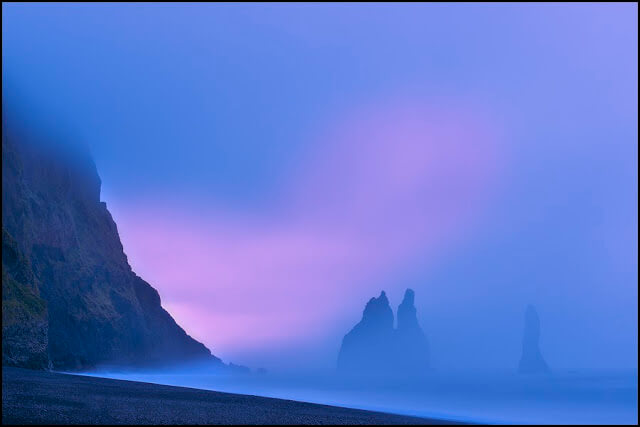 În ce măsură alegi să postprocesezi fotografiile înainte de a le publica?
În ce măsură alegi să postprocesezi fotografiile înainte de a le publica?
Fotografia de peisaj este de neconceput fără procesarea ulterioară a imaginilor. Oricine se respectă şi vrea să scoată calitate maximă fotografiază în RAW. Indiferent dacă este peisaj, portret, produs sau fotografii realizate în studio RAW-ul este primul şi cel mai important pas. Am văzut mulţi exclamând de-a lungul timpului pe pagini de socializare la postarea unei imagini: “fotografie jpg, tras direct din aparat şi neprelucrat” Şi încă erau mândrii de performanţa lor. Controlul absolut asupra unei imagini, fotografiind cu setări manuale şi în modul RAW reprezintă 50% dintr-o imagine bună; asta se întâmplă afară pe teren când are loc “click”-ul, declanşarea. Ceilalţi 50% se consuma acasă în faţa monitorului unde trebuie sa ai cunoştinţe destul de bune în Photoshop ca să poţi extrage detaliile ascunse dintr-un fişier RAW, şi să le poţi valorifica.
Pentru mine impactul vizual contează cel mai mult la prima privire şi nici nu-mi trece prin cap idee de Photoshop (vorbesc despre vizualizarea imaginilor altora). Foarte mulţi însă fac exact invers. Caută naturalul, aruncă în stânga şi în dreapta cuvinte inutile fără a avea habar de ceva.
Eu nu doresc şi nu fac fotografie de călătorie şi documentara, nu doresc să reprezint o locaţie anume printr-un cadru, nu vreau să reprezint realitatea, mai degrabă doresc ca privitorul să se poată pierde în acel cadru oferit cu ajutorul compoziţiei, a luminii şi a atmosferei. Toate acestea se încheagă în aşa-numita “fine art landscape photograpy”.
Dacă ne gandim bine, ce este realitatea? O vedem, o percepem şi o simţim diferit. Deci realitatea este o iluzie generată de creierul fiecăruia. În final pot sa zic că întra-adevăr nu contează cât, cum şi de ce postprocesezi, atâta timp cât nu alterezi imaginea să-ţi apară halouri, posterizări şi tot felul de artefacte nedorite. Sunt N modalităţi, posibilităţi şi programe de postprocesare la îndemâna fiecăruia, dar impactul vizual asupra privitorului este ceea ce contează cel mai mult. În final, am o singură regulă pe care o respect. Nu fac imagini composite/colaje. De exemplu nu extrag cerul dintr-o imagine făcută în munţii Făgăraş acum o lună şi-l aplic pe o imagine făcută alaltăieri în Bucegi unde nu am avut noroc de un cer frumos, dar am un prim plan şi o compoziţie bună. Nu adaug niciodată elemente străine (munţi,copaci, apă etc.) în imaginile mele, şi nici nu le extrag.
To what extent do you post process your photographs before publishing them?
Landscape photography is unimaginable without post processing. Any real photographer who wants to get the most out of his shots shoots in RAW. It doesn’t matter if I shoot portrait, product or studio photography; RAW is the first and most important step. I’ve seen a lot of people mentioning when they publish a photograph on social networks “jpeg picture, straight from the camera and with no post processing”; and they are proud of their achievement. You can only have absolute control of your image if you photograph in manual mode and in RAW. The part that happens out on the field, when you press the shutter represents 50% of a good image. The other 50% takes place at home in front of the computer and it requires solid Photoshop knowledge in order to extract the hidden details from a RAW file.
The visual impact is the most important aspect when looking at a picture for the first time and I don’t think about whether it was photoshopped or not (I am talking about viewing other people’s images). A lot of the viewers actually do it the other way around – they look for the natural, they throw words around without knowing better.
I don’t wish to make travel and documentary photography, my goal is not to represent a certain location in a frame, I don’t want to produce an exact replica of the reality, I’d rather have my viewer get lost in my frame through composition, light and atmosphere. All these aspects come together in the so-called “fine art landscape photography”.
If you think about it, what is reality? We see it, we perceive it and we feel it differently. So reality is an illusion created by our minds. I can only say that in the end it does not matter how and what you post process, as long as you don’t alter the image in a way in which you will get halos, posterization and all sorts of unwanted artifacts. There are n ways, possibilities and post processing programs which are easy to use, but the visual impact on the viewer.
Finally, I have just one rule I respect. I don’t make composite images/collages. For example I don’t extract the sky from an image I took in the Fagaras mountains a month ago only to apply it to an image I shot the day before yesterday in Bucegi where I did not have a great sky, but I found a great foreground and composition. I never add foreign objects (mountains, trees, water, etc.) to my images and I don’t extract them either.
Ce înseamnă fotografia pentru tine?
Momentan pe plan sentimental reprezintă jumătate din viaţa mea de zi cu zi fără de care nu-mi văd rostul existenţei.
What does photography mean to you?
Right now sentimentally photography represents half of my daily life without which I could not see a purpose to my existence.
Ce sfat ai da unei persoane care doreşte să înceapă să facă fotografie de peisaj?
Fotografia de peisaj implică destul de multe riscuri mai ales pe teren. Eu câteodată duc un pic lucrurile la extrem fiind în acelaşi timp şi foarte vigilent unde mă amplasez şi unde calc sau unde mă caţăr. Fotografia de peisaj implică multe călătorii departe de zonele populate, deci posibilitatea evenimentelor neplăcute sau accidentelor trebuie luate în calcul cât mai serios cu putinţă. Implică câteodată căţărări pe stânci, pe trasee de munte cablate corespunzător, dormitul în cort, umblatul pe frig, ploaie, noapte; câteodată lipsa de apă sau alimente. Echipamentul şi îmbrăcămintea de calitate pentru munte sunt indispensabile şi câteodată la final observi că sunt mai scumpe decât aparatura ta foto.
După această mică descriere sfatul meu este foarte simplu. “Ai grija de tine” Nu trebuie să alergi orbeşte după un cadru şi să cazi în prăpastie. Într-adevăr lumina buna ţine puţin şi trebuie să te mişti repede, dar grăbeşte-te încet. Muntele nu pleacă, va fi acolo întotdeauna, dar tu poţi să “pleci” cât ai clipi.
What advice would you give a person who wants to dive into landscape photography?
Landscape photography implies quite a few risks especially on the field. I tend to take things a bit too extreme but being at the same time vigilant about where I position myself and where I step or where I climb. Landscape photography implies a lot of travel in remote areas, so the possibility of unpleasant events or accidents needs to be taken as serious as possible. Landscape photography implied rock climbing, sleeping in a tent, walking through cold, rain, night; and sometimes the lack of water or food. The equipment and quality mountain clothing are indispensable and sometimes you end up realizing that they are more expensive than your photo equipment.
Taking into consideration this short description my advice is very easy “Take care of yourself”. You don’t have to run blindly after a frame and fall in a ravine. It is true that good light doesn’t last long and you have to move fast, but you need to hurry slowly. The mountain does not go away, it will always be there, but you could be “gone” in a blink of an eye.

Cam atât! Sper că v-a plăcut 🙂
That was it! Hope you enjoyed it.:)











 În ce măsură alegi să postprocesezi fotografiile înainte de a le publica?
În ce măsură alegi să postprocesezi fotografiile înainte de a le publica?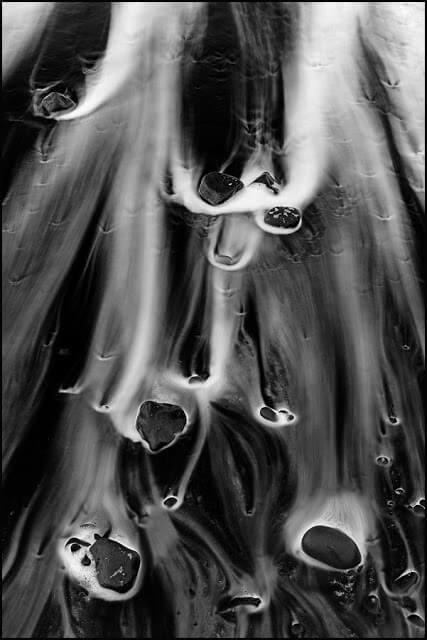
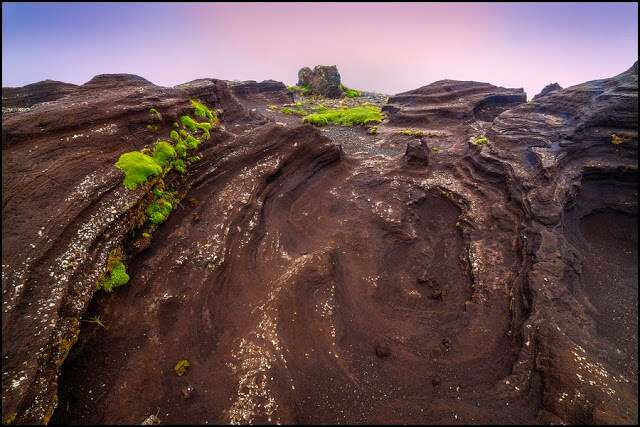

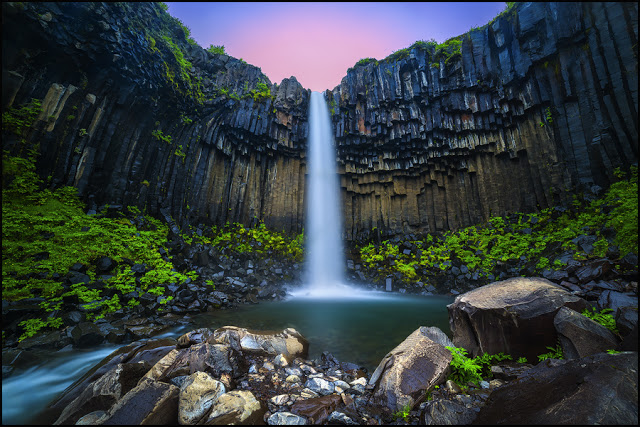










One Comment
Siddhartha Joshi
This is awesome! Lovely pictures…and thanks for the translation 🙂